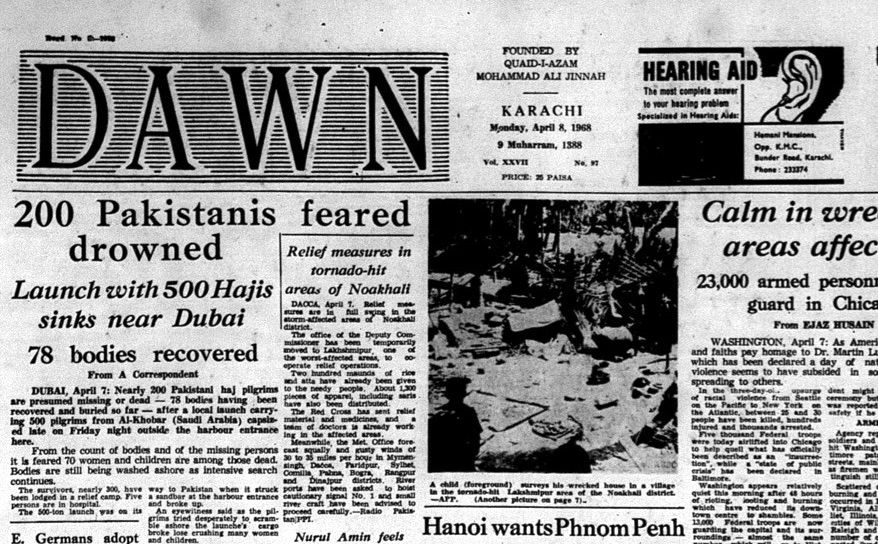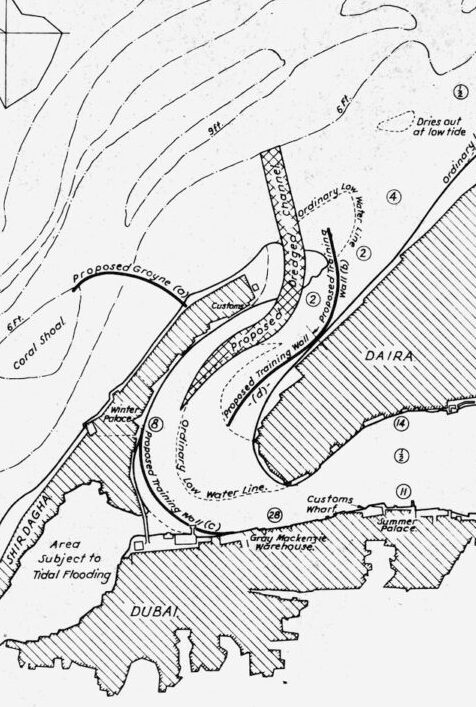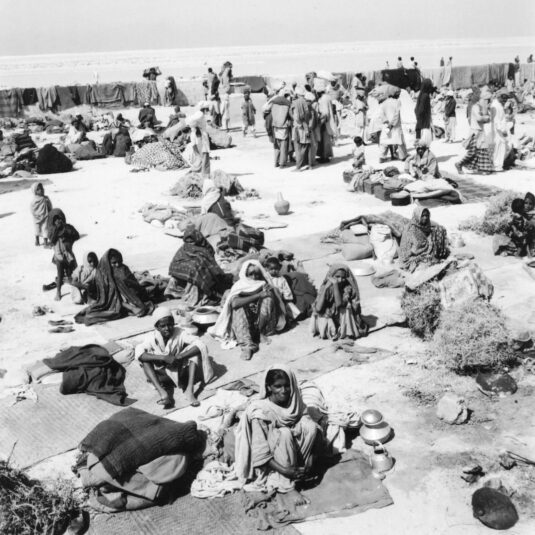We’re often subjected to views of Dubai from above: not just via aerial imagery but also, as plugged by a recent marketing campaign, on ziplines, skydives, and “Dinner in the Sky” where one nibbles while strapped into a rollercoaster seat.
Fifty-three years ago last night, some travelers to Dubai viewed the city as most arrivals once did: just ahead, on the horizon. It was late, nearing 11 p.m. on April 5, 1968. In crescent form, the moon that night made for little competition with the electricity that coursed through Dubai’s houses and illuminated the low-slung shores. During their journeys, the passengers, mostly Pakistanis, had witnessed more arduous lightshows against night skies, but they must have been relieved to see Dubai’s glimmering lights. Contemporary reporting described how “expectant eyes gazed at the port area studded with lights.” Safety grew near.
The ship was built for cargo. On that night, it was devastatingly overcrowded with people. During embarking in Khobar, on Saudi Arabia’s eastern shore, travelers were pressed into each other, soon realizing there would be no room to stretch a back or play with a child for the rest of the day. Once everyone was aboard, the captain ordered bags of cement to be loaded, a quick profit in Dubai he could not resist. The loading only stopped once the boatmen refused more.
The passengers were hajj pilgrims who had made their way across Saudi Arabia from Hijaz to Khobar. For many pilgrims, the hajj took years to complete, often stretched out with months of toil to pay for it. None of these travelers was officially registered to attend that year’s hajj. Only about a hundred of them carried a passport. After the stop in Dubai, they were reportedly completing the trip with a return to Karachi, many heading back to towns and villages of Sindh. Some though might have resolved to stay on in Dubai. Rumors abounded of new, gigantic projects just getting started there—work opportunities.
A luminous dome of light guided the overburdened ship, its waterline dangerously submerged. With their gaze pressed forward, passengers on upper deck could measure how the distance to shore was shrinking. They were hungry, dehydrated, and for a moment relieved. No one knows exactly how many died; survivors’ estimates were higher than official ones.




